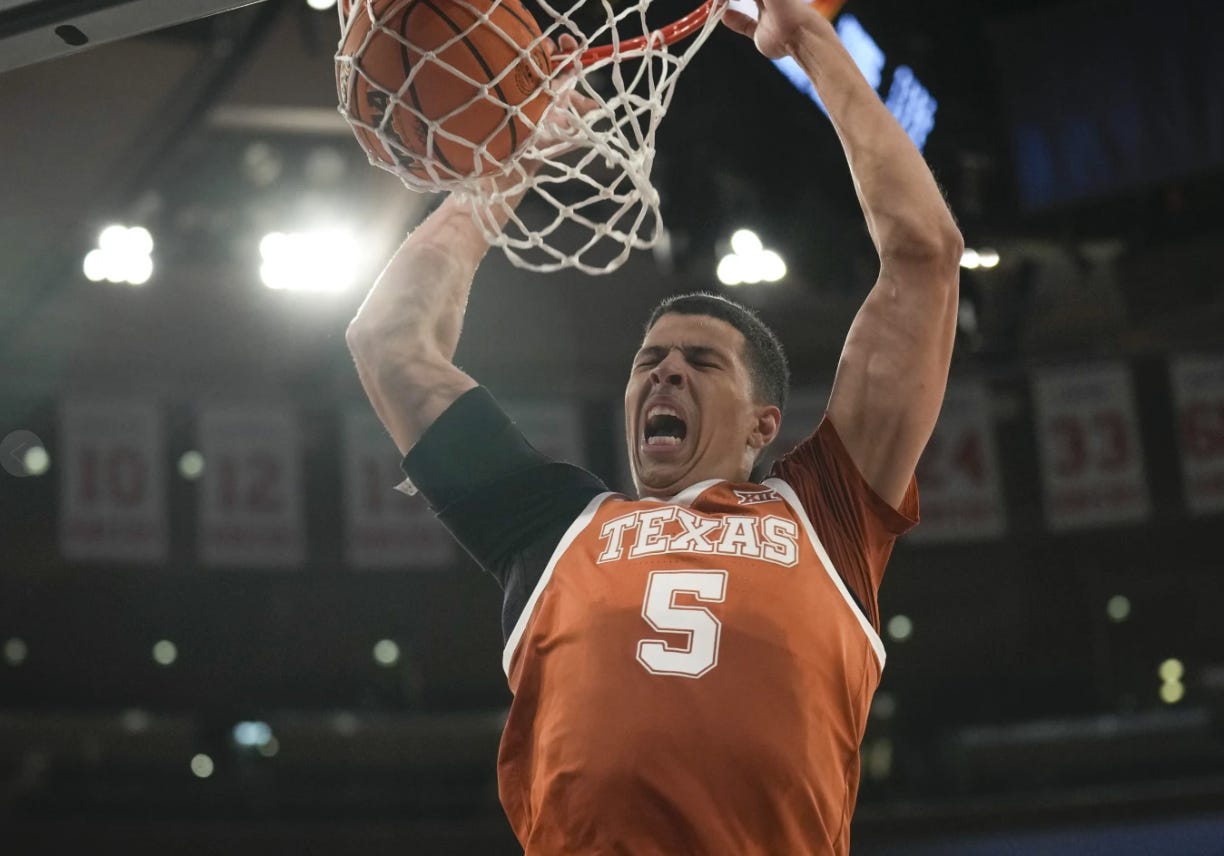Breaking Down the 'Horns Series, Part 1: Can Kadin Shedrick Hold Down the Center Position?
In order for the Longhorns to compete in the SEC this season, Texas' graduate center must take a step forward and become 'the guy' in the front court.
Upon looking at the Texas Longhorns basketball roster, the obvious standouts almost all come from the guard/wing group.
Oregon State transfer Jordan Pope, Arkansas transfer wing Tramon Mark, unanimous five-star Tre Johnson from Link Academy, Indiana State transfer Julian Larry and returning guard Chendall Weaver are all players with big roles to play on a team that will have no trouble being effective scoring the basketball and playing high-paced offense based in perimeter shooting.
But there is more to building a successful roster than perimeter play – obviously, it’s just half the battle. Texas may have one of the best guard groupings in the entire conference; as for the bigs, the path to production and success may not be so obvious.
The only real established surefire starter in the front court is Kadin Shedrick, a fifth-year senior who transferred from Virginia before the start of the 2023-24 season. Standing at 6-foot-11 and weighing 230 pounds, he’s big enough to play the role of center – the question isn’t the size, but more so his ability to handle physicality in the paint.
This is not a mental question, as there is no reason to believe Shedrick isn’t ready to handle the role from that standpoint. There is however a legitimate question of physical durability. Under this umbrella falls injury concerns as well as ability to bang inside and rebound the basketball on a consistent basis.
For reference, he had just 97 total rebounds in 552 minutes played for the Longhorns last year. Per game, he averaged three boards, and though he was playing just 17.1 minutes per game, a confluence of back and shoulder injuries made it very difficult for him to put a body on opposing players.
He was fifth on the team in rebounds, but a more eye-opening comparison would be Shedrick’s numbers to other Longhorns on the team’s numbers.
Chendall Weaver, a 6-foot-3 guard, averaged just one more minute per game than Shedrick, yet recorded the same amount per contest on average. Of course, he wasn’t slowed down by injury like Shedrick was, and this needs to be taken into account.
Still, Shedrick will be the player anchoring the front court unit, so it’s going to require a different kind of effort on his part as far as attacking the glass goes, as his best rebounding season, his sophomore year at UVA, he still managed just 5.1 boards.
Gone is Texas’ leading rebounder, Dillon Mitchell, a former five-star who transferred to Cincinnati this offseason. This means the emphasis will be on Shedrick to handle glass-cleaning duties in a major way.
The SEC this year has plenty of talented front court players – bigs like Johni Broome and Chad Baker-Mazara (Auburn), Jarin Stevenson and Cliff Omoruyi (Alabama), Felix Okpara (Tennessee), Colin Murray-Boyles (South Carolina), Zvonomir Ivisic (Arkansas), Brandon Garrison (Kentucky), Rueben Chinyelu and Micah Handlogten (Florida), Asa Newell (Georgia) will give this Texas team fits unless Shedrick is able to play 25+ minutes per game consistently, something he’s never done before.
The ideal situation for Kadin Shedrick is not that he scores a ton of points, either – the perimeter scoring should be sufficient enough to where he doesn’t need to focus on being an option in that sense – but he has to be a guy that records six-to-seven rebounds a game for Texas to have any shot in conference.
As it was earlier stated, his injuries are of major concern. But if he’s able to work through them and play, then Texas may fare better in the SEC than their front court rotation indicates preseason.
@keenanwomack on Twitter.





